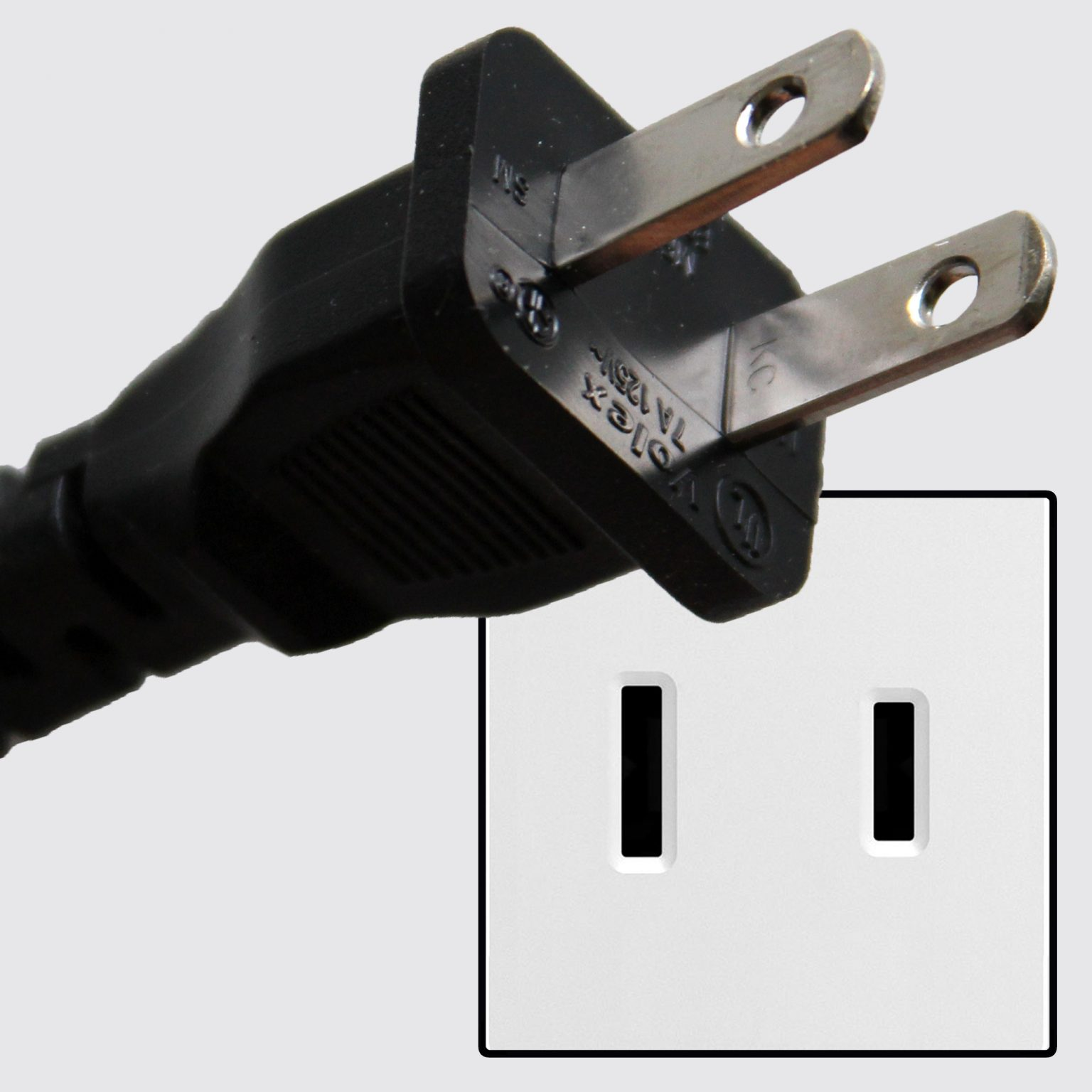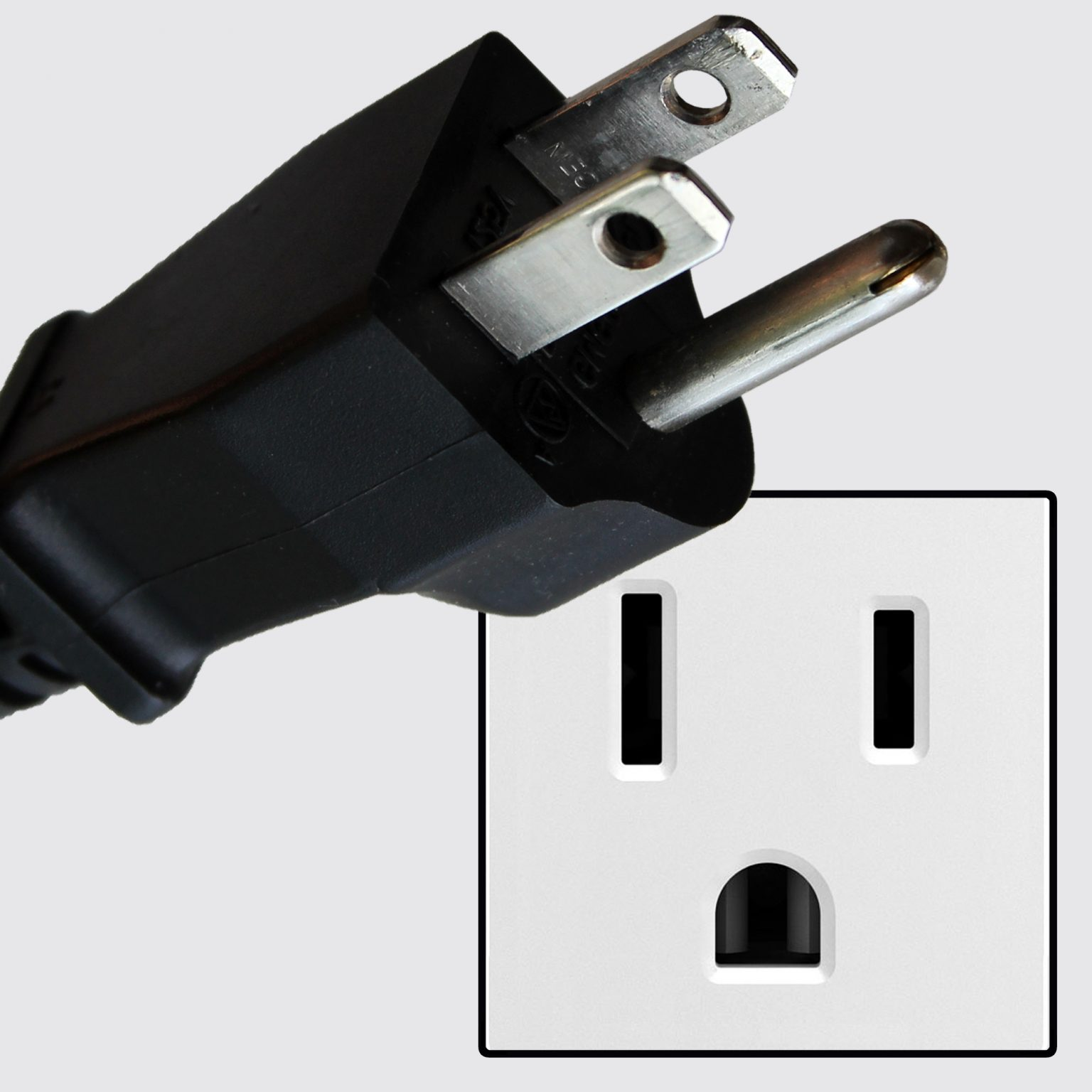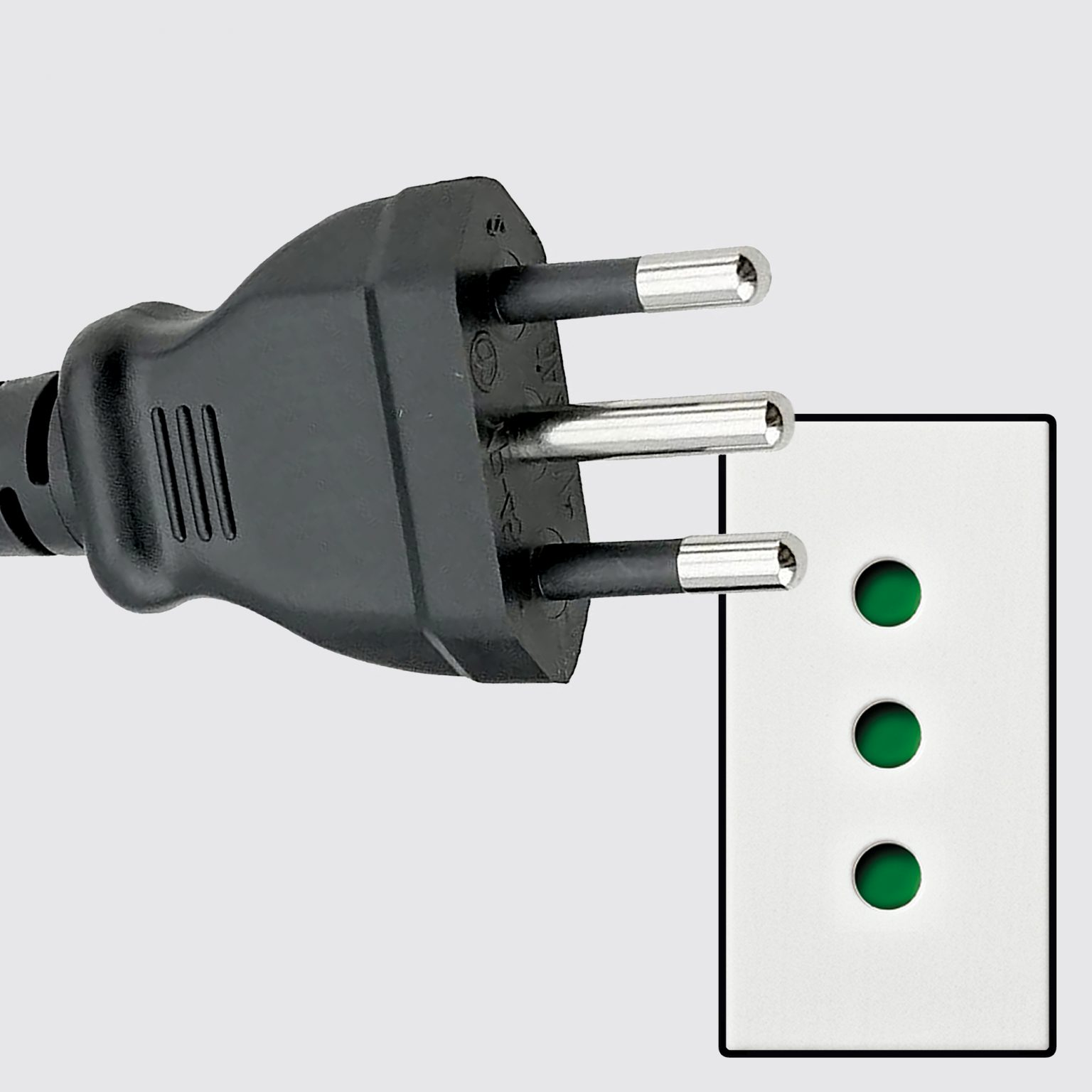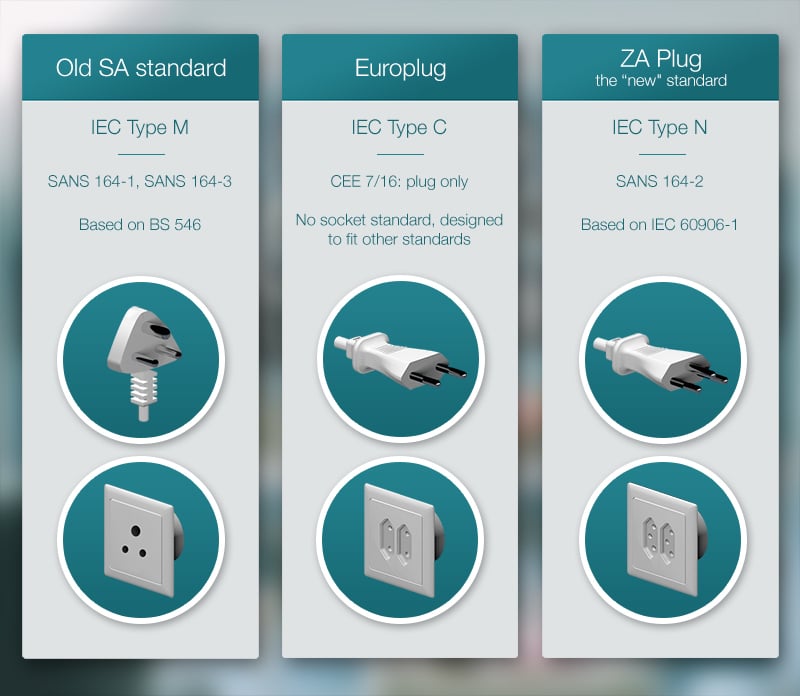They’re like that in this apartment we’re renting and I keep seeing them elsewhere. I don’t get it.
when any electricity leaks out (for example through your body) it switches off. the eu also has the same system, but its one switch for your entire house. the us also has this but only in bathrooms.
These aren’t automatic switches, but other people explained the reasoning.
oh, according to electroboom they were gfci.
They’re connected to an RCD, as modern UK wiring has all sockets connected via an overall RCD in the fusebox, but the switches on the socket are just basic on/off switches.
GFCI circuits are required by code around sinks and the like. Bathrooms, kitchens, utility wet rooms, etc.
You can relatively easily install them anywhere you want though.
This is virtually standard in Australia
Depending on who built the house, it’s the standard for a “good” house in Ghana, Nigeria, Zambia and I think Kenya.
It is standard in NZ
Kind of off topic, but I’ve just gotta add that the safety shutters over the positive and negative terminals that only open when the ground pin (which is longer than the others on the plug) is inserted up top is brilliant, it basically makes short circuiting impossible. Electrical outlet design is one of the few things I’ll concede the UK does better than the rest of the world.
Allows you to remove power from the plugged in device without unplugging it. This provides convenience to easily and quickly turn things on and off and prevents arcing when unplugging. 240V 13A can arc a bit, particularly if unplugged under load, or on older sockets where the contacts have worn. While a little arcing doesn’t do much damage immediately, over time it will cause pitting and make a high resistance joint that will generate heat.
The switch only disconnects the live terminal, but the neutral terminal should be similar potential to earth (depending on how the building is wired).
Truly the king of plugs and sockets. The plugs are individually fused according to the device needs, ergonomic to use and exciting to stand on.
exciting to stand on
Thanks, I hate it.
Makes sense, American lie voltage (outlets) are 120V. 240V is considered high voltage and isn’t typically fed into residential units. Plugging anything rated for 120V into a 240V outlet is gonna be a bad time, and is why the outlets for high voltage are shaped differently.
I was gonna guess that the switches were too negate so-called vampire power, which is when a truck’s of electricity flows into appliances that are normally off. IMO that trickle is so negligible in a residence that is 6 effectively irrelevant, but that’s just here in the US. I don’t know anything about foreign electrical systems.
240 is used all the time for furnaces, driers, and increasingly EV outlet connections.
It’s just all our “normal” stuff is 120.
I wish our electric kettle outlets were 240. I’m unreasonably jealous that other places in the world can boil water faster!
I think you can have it, but you’d need to spend a pretty penny.
All it would take is calling an electrician to run the appropriate wiring from the place you want the kettle plugged in to you breaker box, connect it to the breaker box with the appropriate breaker, cap off the other end with the appropriate plug (a 240V plug does exist in America), and then buy a kettle capable of receiving the rated voltage and current and splice on the appropriate plug (because I presume you won’t find one sold with that plug).
An extremely expensive way to save maybe three minutes boiling water, but you can do it.
Allows you to remove power from the plugged in device without unplugging it. This provides convenience to easily and quickly turn things on and off and prevents arcing when unplugging.
That’s exactly what I do, because it’s more convenient than unplugging everything.
I live in South Africa, where we had rolling blackouts (called loadshedding) for a few years. It’s easier to switch everything back on when the power comes back than to plug it back into a socket without a switch, especially with my fucked up spine.
The electricity in the place I live was done poorly, so having something plugged in “live” risks a surge or something and then the appliance gets fucked and then everything smells like burnt plastic.
And that’s the best case scenario. Others have had housefires.
Also, the South African plugs aren’t pleasant accidentally to step on. It won’t pierce your foot, but it can still hurt like a motherfucker for a few seconds if you step on it in the wrong way.
Those UK plugs do look a lot more nasty to step on. I shudder at the thought.
I like the EU and US two prong cables ( 🔌?) where the prongs are parallel to the cable, but not the cables with the orthogonal prongs.
I like the EU and US two prong cables ( 🔌?) where the prongs are parallel to the cable, but not the cables with the orthogonal prongs.
Non-grounded plugs aren’t that great, though, and once you add the third prong the plug gets much less flat. Compare:


Maybe Italy and Chile have the best idea in terms of slim grounded plugs, although the lack of polarity might be a problem?

Also, IMO right-angle plugs are often better than straight ones because you can put furniture closer up against them and do so without stressing the cable.
right-angle plugs are often better than straight ones because you can put furniture closer up against them and do so without stressing the cable.
Yeah that is definitely a huge bonus. I’ve taken it for granted.
We’re slowly adopting three pronged Italian/Chilean-type plugs that will be “backwards-compatible” with the EU plugs. I have no clue about polarity or anything like that.

New sockets include em. The original three pronged socket is kind of a hazard. Kids can stick their fingers in there. Not sure how that got approved.
why would the lack of polarity be a problem? the outlets only deliver AC, and everything plugged into them are made for AC.
“so many”?
isn’t it all of them?
No not all of them.
Source, I was born here.
All of them in the UK.
i live in malta, we inherited your plugs and sockets. Never seen one without a switch over here. Til
also small child/baby protection.
But who will protect the big babies?
How does the switch protect children?
if it is a small child it is assumed that the joint probability of both turning on the switch and inserting a fork through the holes is roughly the product of probabilities of each (therefore lower than each individually), i.e both events are independent.
Have you tried to stick anything metal into one of these plugs? It is fairly todler proof. I think a 7 year old has the dexterity to defeat it but certainly not a baby.
Manufacturers sell the wall sockets in both switched and unswitched versions so I would say the switch is just there for convenience of the user.
It seems that maybe in the 60s having a switch on the wall was very useful because most electrical devices would have been designed to be switched on or off from its mains power connection (like lamps, hairdryers, vacuum cleaners, electric whisk, etc). I assume the standard was to have a switch as this gave a little extra functionality. Today however many electrical devices have digital electronics that don’t expect to be power cycled and so a switch is not really a feature but an inconvenience (think smart bulb, or Apple TV).
Have you tried to stick anything metal into one of these plugs?
No, hold on a second, let me try and come back.
Joking aside, I agree something like what you explained was probably the original reason. But I have seen some parents praising the switch mechanism for this reason as well but perhaps because they are more used to old European type plugs which does not have the internal security feature of UK plugs
UK household electricity is pretty spicy compared to many other places - it has more safety features as a result. (3 pinned fused plug, socket switches etc)
The rest of Europe has 220V as well and they don’t have switches on their outlets.
How is it more “spicy” than anywhere else in Europe?
A lot of dodgey wiring.
Do they have the wiring on the outside of the houses so it’s easier to repair?
I’ve heard in UK they tend to do such things.No, it’s usually buried in the wall behind the plasterboard. Although it is possible to use surface trunking. It’s quicker and therefore cheaper to use trunking with less making good afterwards

It was a joke on UK putting water pipes on the outside of their houses.
Making them sometimes freeze and burst in the winter, but it’s easier to repair. 😋Well duh, they freeze and burst in winter so they obviously need to be outside for easier repair! Think of the mess they would make if they were inside the walls.
In our defence, most of that is legacy from the post war rebuild (copper shortages etc). The modern regs are comparable or better than a lot of places.
There’s enough of the dodgy stuff around that it needs to be accounted for, but it’s being phased out as new stuff it built or renovated.
I was mainly referring to almost all of the American continent(s), lots of Africa, China and a few other places too. I didn’t think I’d mentioned Europe.
The many other places is the US
And Japan, and Canada, and Mexico, and the majority of South America, and a handful of countries in Africa and the Middle East.
Isn’t it just 230v 50 Hz like most of the world?
Apparently around 65-70 % of the world population (with access to electricity) has 230v 50 Hz.
I have been with 110v plenty of times used to wire houses in my youth. Been hit once with 220v knocked me on my ass for 3 days. I stopped being so cavalier after that I wish they had those outlets vs the midevil outlets the US has.
As any cautious parent could tell you, these are helpful when the toddler starts sticking things in places where they don’t belong. Such as metal cutlery. In the power sockets.
This isn’t the reason.
The switch is more likely to attract a toddlers attention. Some have little red lights even. It would be false sense of security at best. You can get those plastic blank plugs to stop your kid putting a fork in there.
The switch is so, if you kid is being electrocuted by putting their fork in the toaster, you can turn it off at the wall without having to touch the electrified kid.
Don’t toddlers start pressing buttons even earlier? Not sure this alone could protect them
True, but this is at least a little safer
Safety, easier to switch things off without unplugging them. Why not have one if it’s more convenient? Not all of them have switches though.
It made a lot more sense when things didn’t have their own power switches but…what does that apply to anymore? How many devices do you own that are powered off exclusively by unplugging it? Why pay for the manufacturing time and material to add a switch if nothing uses it anymore?
Fridge, washing machine, dishwasher, television, phone charger, robovac dock, lamps, computer monitor, aquarium pump… I could go on.
It’s not strictly necessary, but it’s a convenience.
Most of those have power buttons and, aside from the charger and vacuum, those things are supposed to stay on.
I meant more things like lamps that you actually turn on and off…And the majority lamps have switches nowadays, I’m not sure why you included it on your list
We’re getting into the weeds a little bit here, but there’s a lot of things that have power buttons that will put the thing into standby, not off. I’ve often done a ‘hard reset’ on my ‘smart’ tv when it starts acting up, just gotta cut the power.
It’s a small convenience, but it’s nice. I’ll happily pay the extra three cents in manufacturing costs for something that lasts decades and may be occasionally mildly helpful.
To turn things on and off.
Big if true.
Massive if correct
Large if accurate
I remember when I was young and bending down all the time was a thing you could do painlessly. Ah, youth.
I can still bend down ok, but getting back up off my knees however….
Smart plugs are awesome!
Have you tried using your toes?
You can use your toes for switches.
Not when there are no switches and you have to pull out the plug everytime you want to switch off the appliance.
Having grown up with it I missed those tbh. Makes saving power easier lol
Does it? Can’t you just turn off the device instead?
A lot of devices can be turned off, but they still use power. So you can waste electricity even though the devices are “off”.
Things like normal table lamps aren’t the problem, it is stuff like TVs, computers, stereos, etc.
yes.
Im from the states and live in Ireland. Here, people unplug lamps when they leave for the weekend. Dozens of times, I’ve had to plug lamps back in when coming into the office over a weekend or things like Christmas break.
I’ve also had to explain to at least 5-6 people that something that does not draw power by being plugged in, such as a toaster, electric kettle or light fixture (unlike a computerized device that has a stand-by mode) is not “wasting power” unless you unplug it or turn the outlet switch off.
I had a person at a party tell me their father was an electrician and taught her to turn the switches that lead to anything such as lamps OFF when they’re not being used because it costs electricity to “keep the wire charged”. True story.
Mainly they exist because there weren’t central fuse boxes for a while due to wartime copper shortages.
turn the switches that lead to anything such as lamps OFF when they’re not being used because it costs electricity to "keep the wire charged
Lol what a donkey. For anyone that’s unaware, your meter spins when current is flowing, when a device is actively using power. If there’s no current flowing, the meter isn’t spinning. Just because a wire has potential doesn’t mean it’s actively drawing current, it only means it’s ready to do something, and any device that has the main feeder going through a physical switch (ie no standby like a computer or tv) has zero current path when the switch is open/off. Even devices in standby are drawing such a negligible amount of power that it doesn’t matter.
My mom used to unplug everything all the time, and it took years to convince her that’s not how that works. She only finally got it when I became an electrician.
You can test this theory yourself if you have a multimeter. Select ohms/continuity, and put the leads across the two prongs. If there is a resistance value present, it will draw current. If it says OL or 0 ohms, that means open line and it won’t draw anything.
the only thing that would make a shred of sense would be reactive power from plugged but unused transformers and the like, and for this reason you should disconnect these when not in use. but the only loads of this type that matter are welders and such
I present to you my favorite YouTube person:
The GFCI/RCD, a simple but life saving protector:
https://youtu.be/ILBjnZq0n8s?list=PLv0jwu7G_DFU62mIGZNag5vQ0a6tDGBpO
In defense of the Switched Outlet:
Electrical topics playlist:
https://youtube.com/playlist?list=PLv0jwu7G_DFU62mIGZNag5vQ0a6tDGBpO
I could just watch this guy all day lol
A fellow human of great and distinguished taste I see
I expected Technology Connections or ElectroBOOM, was not disappointed.
One teaches what to do, the other teaches what not to do.
ElectroBOOM keeps me alive sometimes, and Technology Connections told me how to properly use a dishwasher.
Americans don’t have this???
Sometimes we have specific plugs that are wired to a wall switch that can be used to turn those specific outlets on and off. All the examples I know of are for standing lamps, so they can be turned on an off like ceiling lights.
I’ve only seen this a few times, including my current house.
It’s been code for a long time that every room must have a switched lighting source, and before recessed lights became more common or if the original builder didn’t put a ceiling light or wall sconce, you’d have a switched outlet for a lamp. Typically it’s only half of one outlet though, unless your house was wired by a crackhead like mine.
Only half of one outlet? That sounds super frustrating. I think it would take me a while to discover that the random light switch that doesn’t do anything is related to the power point where only one side charges my phone.
Yeah, it makes sense from a functional standpoint, being that often you’ll only want to switch on lamp, while having full constant functionality of the other plug.
 You basically break that tab between the two screws, then wire the constant power to one, and the switch leg to the other.
You basically break that tab between the two screws, then wire the constant power to one, and the switch leg to the other.But yeah, it’s not always consistent where that outlet is located within a room. Like I have the tools to figure it out pretty quick, but you basically just have to take a lamp and plug it into each outlet with the switch off until you find it.
Yeah, I like the idea of being able to switch floor lamps and what not from the doorway. No-one likes the big light, right?
Not sure if I like it enough to implement it in my dream home though. Possibly with some kind of different shaped plug, or a colour code that matches the switch?
We do have ground fault circuit interrupt (GFCI) outlets, which are required when a socket is within a certain distance of a water source but can be installed on all outlets if you want. They have a little breaker inside that trips automatically if it detects a problematic difference in current flow.
They’re not on/off switches but you could press the “test” button on the outlet to break the circuit.
I’ve also seen some whole outlets that are switched on/off from a light switch elsewhere in the room. Those are super annoying because there’s no required indication that they work that way so you get to find out for yourself.
In my little Eastern European shithole, GFCI relays are required for any apartment or house, installed to the incoming power main. Is that not a thing over there?
For safety I guess?
I don’t get how that makes it safer.
So when the dumb person tries to insert a fork in the plug, they don’t die electrocuted.
Have you seen the list of safety features on UK plugs and sockets? The sockets have shutters in them that prevents anything being inserted into the live or neutral sockets unless the (longer) earth pin of a matching plug is inserted first.
Having said that, I agree: seems to be a belt-and-braces approach. No downsides.
And it allows you to cut power to an appliance without having to remove the plug.
Sockets with flaps are code in the us too and have been for a while.
Isn’t the USA 2 pin for many outlets, though. So there is no earthing. The uk socket requires the earth connection to be made by the longer earth pin on the plug before the flaps will open.
yes but you have to open both shutters at the same time. The ground doesn’t have a shutter.
I like them, personally. You don’t have to use them but they are sometimes handy. I just spent 30 seconds feeling around a TV to turn it off only to discover it doesn’t have buttons. Killed it at the wall.
It’s not a deal breaker, in any case. The weird foreign convention I would like to shame is doors that require a key to open from the inside.
I usually see keyed from the inside locks when there is glass in/near the door to prevent someone from breaking the glass, reaching in and unlocking the door.
If a burger is gonna break the glass, a keyed lock isn’t going to deter them. Unless it’s like only a tiny glass window on the door.
If a burger is going to break the glass, it’s either really bad glass or a really bad burger.
I stand by what I said.
The weird foreign convention I would like to shame is doors that require a key to open from the inside
You can’t lock yourself out with those
But you can lock yourself in. During a house fire.
You can lock yourself in with the other type too.
No you can’t. You can lock yourself out, but a typical residential house built to code in North America has a latch handle that always turns from the inside, even when locked, and usually unlocks by doing so to prevent accidental lock-outs. And likewise if the door has a deadbolt, it must have a deadbolt with a handle on the inside. Most other kinds of locks are also easily accessible and removed by hand from the inside. The point is that they can’t require a key from the inside, because if you can’t find the key then you are locked inside and in thick smoke and fire that the key may be impossible to reach. If any egress door requires a key to unlock from the inside it is considered a serious fire hazard and will never pass a code inspection. (Of course, foolish people can still add them later but you can’t prevent stupid and it’s still a fire hazard not to mention impractical)
These types of building code and fire code rules are typically written in blood. People have died because of this.
All house doors/egress doors in Brazil require keys to unlock. BUT (and it’s a big but) most houses here are made of bricks, with ceramic roofs.
It does make sense to have easy-to-escape houses when they are built of flammable materials with an accelerant for a roof.
The weird foreign convention I would like to shame is doors that require a key to open from the inside.
Huh. Where have you seen those? Seems dangerous.
They’re used where there are windows close enough that, if broken by an intruder, the intruder would be able to operate the lock.
The better solution is, of course, to not use such doors.
I just spent 30 seconds feeling around a TV to turn it off only to discover it doesn’t have buttons.
Ugh. That annoys the shit out of me. Our dog chewed up the TV remote when she was a puppy, but only got to the power button. But since the TV had no physical buttons, we couldn’t turn it on and off anymore until we got a new remote.
I have an old android phone I keep around because it has an IR LED on top and I loaded it with a few free universal remote apps. They all work offline and it’s come in handy so many times.

















